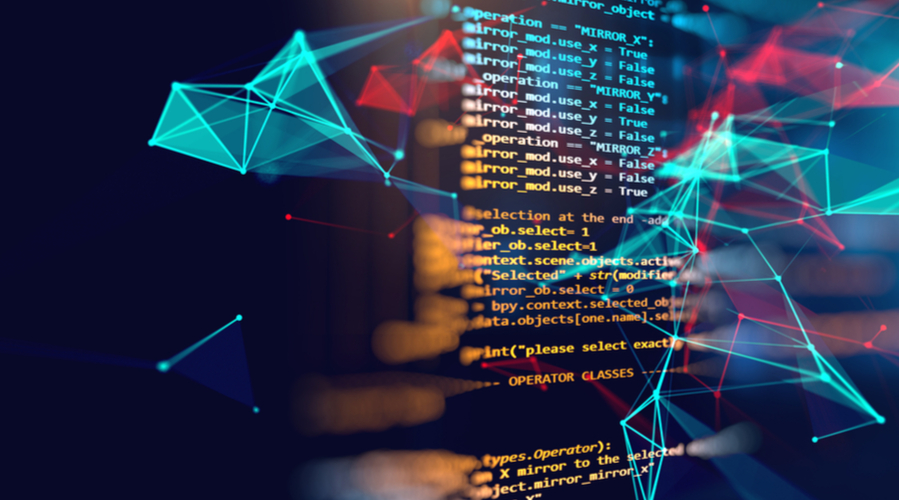
Enterprise utility improvement is a complex and disturbing system that requires careful planning, coordination and execution. One of the important thing demanding situations in this subject is handling code changes, in particular when a couple of builders or development corporations are operating on the identical task simultaneously. This can cause troubles which includes code conflicts, compatibility problems, and delays in the development system. In order to deal with these challenges, it's far critical to utilize equipment and techniques which can help analyze code adjustments and their impact on the general venture.
The Complexity of Managing Code Changes in Enterprise Applications
Navigating the intricate landscape of enterprise application development often involves intricate coordination across various modules and components, each with its own set of dependencies. The task of integrating code changes becomes exponentially more complex as the project grows, with developers distributed across different segments. This complexity is not just about merging new lines of code; it’s about ensuring these changes harmoniously blend without causing disruptions. Missteps can introduce compatibility issues or even trigger cascading failures that compromise project timelines. Understanding this web of interdependencies and steering clear of potential pitfalls requires a nuanced approach, emphasizing the need for sophisticated analysis tools that can preemptively identify and address the ripple effects of code modifications.
The Role of Freelancers and Independent Firms in Enterprise Development
Engaging freelancers and independent development firms brings a diverse pool of talent and specialized skills to enterprise projects. However, this approach also introduces complexities in code management due to varied coding styles and methodologies. With multiple hands touching the project from different locations and perspectives, ensuring uniformity and seamless integration becomes a formidable task. These variations can lead to integration hurdles, requiring meticulous attention to detail and robust strategies to maintain a cohesive development environment. Adopting standardized tools and practices becomes crucial in harmonizing these diverse contributions, enabling a unified workflow despite the geographical and procedural differences among contributors.
Understanding Static Code and Change Impact Analysis Tools
Static code analysis tools serve as a preemptive strike against coding errors, examining the codebase for potential flaws without the need to run the program. This method helps pinpoint syntax mistakes, vulnerabilities, and other concerns that could degrade application performance or stability. Complementarily, change impact analysis tools provide insights into the repercussions of proposed code alterations on various application segments. These instruments allow developers to foresee the consequences of their changes, facilitating a more informed decision-making process. Together, these tools form a critical component of the development arsenal, streamlining the identification and rectification of issues before they escalate into more significant problems.
How These Tools Can Mitigate Development Challenges
By integrating static code and change impact analysis tools into the workflow, teams gain a significant advantage in early problem detection, crucial for preventing the cascade of complications later in the development cycle. These sophisticated technologies offer a detailed view into how modifications might alter the current ecosystem, ensuring that each change is both necessary and beneficial. They enable a preemptive approach to code quality enhancement, spotlighting inconsistencies and potential flaws before they evolve into more complex issues. This proactive strategy helps in maintaining a steady pace in project timelines, sidestepping the roadblocks of code conflicts and incompatibilities that typically slow progress. Moreover, their role in improving maintainability and consistency across the project's codebase is invaluable, contributing to a more durable and dependable application infrastructure. Through the strategic use of these analysis tools, development teams can navigate the multifaceted challenges of enterprise application projects with increased confidence and efficiency.
Best Practices for Implementing Analysis Tools in Enterprise Projects
Adopting static code and change impact analysis tools within enterprise projects mandates a structured approach for maximum efficacy. It's crucial to onboard developers with comprehensive training sessions focused on leveraging these tools for optimal outcomes. Integrating these tools into the development workflow requires careful planning and consistency to avoid disruption. Establishing a routine for periodic code reviews ensures adherence to coding standards and facilitates the early detection of potential issues. It is equally important to keep these tools updated to align with the latest development trends and project needs. Customizing the configuration of these tools to match project-specific requirements can significantly enhance their utility, providing more relevant insights and recommendations. By embedding these practices into the development process, teams can enhance code quality, project alignment, and overall project success.
Ensuring Collaboration and Consistency in Large-Scale Enterprise Projects
Large-scale enterprise projects demand a high level of synchronization among team members to navigate the complexities of development effectively. The utilization of static code and change impact analysis tools plays a pivotal role in fostering this environment by standardizing the review and integration of code changes. These tools serve as a common language, minimizing misunderstandings and discrepancies that can disrupt project timelines. They encourage a shared understanding of the project's codebase, making it easier for developers to collaborate, regardless of their geographical location or individual coding practices. This approach not only streamlines the development process but also reinforces the consistency of the final product. Engaging in these practices enables teams to maintain a coherent development trajectory, ensuring that every contribution aligns with the project's overall objectives and quality standards.
Implementing Effective Collaboration Strategies
To beautify collaboration and make certain consistency inside corporation tasks, adopting clean communique and joint effort techniques is critical. Incorporating structured code evaluate classes, comprehensive assignment documentation, and ordinary repute updates can drastically bridge the gap amongst crew contributors. This framework fosters a tradition wherein transparency and responsibility are paramount, facilitating a streamlined workflow where each participant is aligned with the project's direction and targets. It also aids in mitigating the complexities added by way of various coding methodologies and geographical dispersion of participants. Establishing these practices now not simplest bolsters the concord of the improvement team but additionally paves the manner for the seamless integration of contributions, making sure the shipping of remarkable applications that adhere to the stipulated user requirements and undertaking goals.
















